Mehdi Fatan Serj
Biomedical image analysis competitions: The state of current participation practice
Dec 16, 2022Abstract:The number of international benchmarking competitions is steadily increasing in various fields of machine learning (ML) research and practice. So far, however, little is known about the common practice as well as bottlenecks faced by the community in tackling the research questions posed. To shed light on the status quo of algorithm development in the specific field of biomedical imaging analysis, we designed an international survey that was issued to all participants of challenges conducted in conjunction with the IEEE ISBI 2021 and MICCAI 2021 conferences (80 competitions in total). The survey covered participants' expertise and working environments, their chosen strategies, as well as algorithm characteristics. A median of 72% challenge participants took part in the survey. According to our results, knowledge exchange was the primary incentive (70%) for participation, while the reception of prize money played only a minor role (16%). While a median of 80 working hours was spent on method development, a large portion of participants stated that they did not have enough time for method development (32%). 25% perceived the infrastructure to be a bottleneck. Overall, 94% of all solutions were deep learning-based. Of these, 84% were based on standard architectures. 43% of the respondents reported that the data samples (e.g., images) were too large to be processed at once. This was most commonly addressed by patch-based training (69%), downsampling (37%), and solving 3D analysis tasks as a series of 2D tasks. K-fold cross-validation on the training set was performed by only 37% of the participants and only 50% of the participants performed ensembling based on multiple identical models (61%) or heterogeneous models (39%). 48% of the respondents applied postprocessing steps.
Survey on Deep Learning Techniques for Person Re-Identification Task
Jul 19, 2018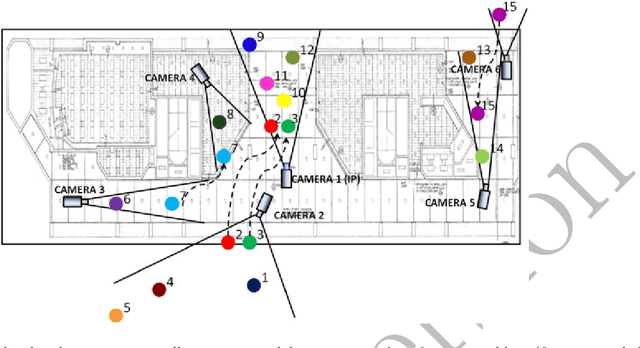
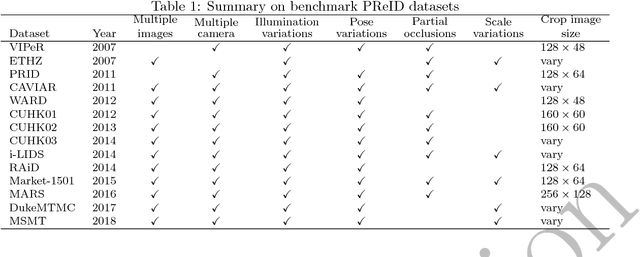
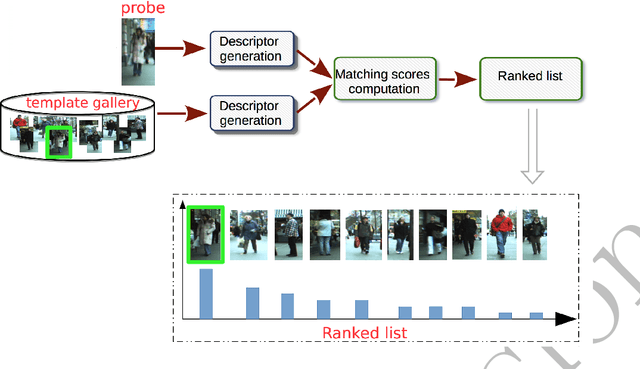
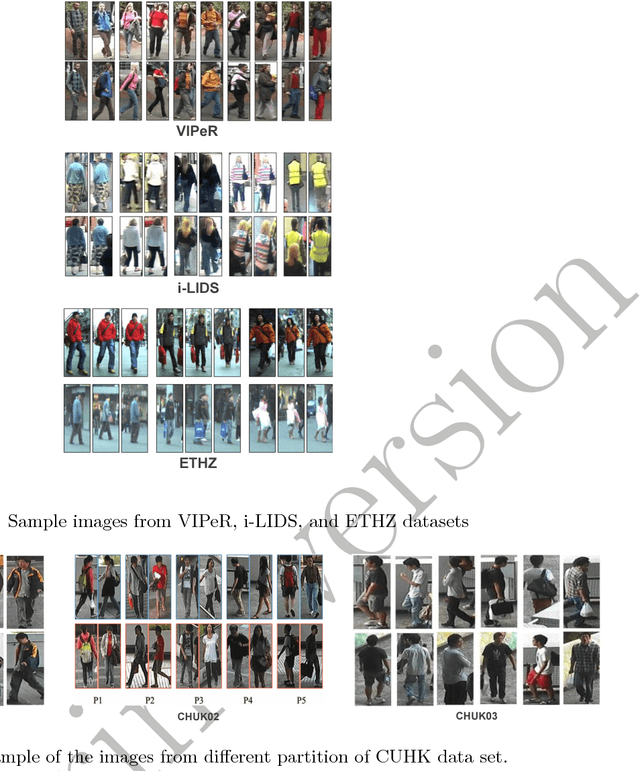
Abstract:Intelligent video-surveillance is currently an active research field in computer vision and machine learning techniques. It provides useful tools for surveillance operators and forensic video investigators. Person re-identification (PReID) is one among these tools. It consists of recognizing whether an individual has already been observed over a camera in a network or not. This tool can also be employed in various possible applications such as off-line retrieval of all the video-sequences showing an individual of interest whose image is given a query, and online pedestrian tracking over multiple camera views. To this aim, many techniques have been proposed to increase the performance of PReID. Among the systems, many researchers utilized deep neural networks (DNNs) because of their better performance and fast execution at test time. Our objective is to provide for future researchers the work being done on PReID to date. Therefore, we summarized state-of-the-art DNN models being used for this task. A brief description of each model along with their evaluation on a set of benchmark datasets is given. Finally, a detailed comparison is provided among these models followed by some limitations that can work as guidelines for future research.
A Deep Convolutional Neural Network for Lung Cancer Diagnostic
Apr 22, 2018


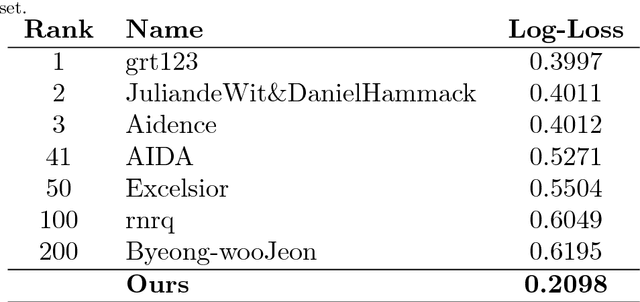
Abstract:In this paper, we examine the strength of deep learning technique for diagnosing lung cancer on medical image analysis problem. Convolutional neural networks (CNNs) models become popular among the pattern recognition and computer vision research area because of their promising outcome on generating high-level image representations. We propose a new deep learning architecture for learning high-level image representation to achieve high classification accuracy with low variance in medical image binary classification tasks. We aim to learn discriminant compact features at beginning of our deep convolutional neural network. We evaluate our model on Kaggle Data Science Bowl 2017 (KDSB17) data set, and compare it with some related works proposed in the Kaggle competition.
 Add to Chrome
Add to Chrome Add to Firefox
Add to Firefox Add to Edge
Add to Edge